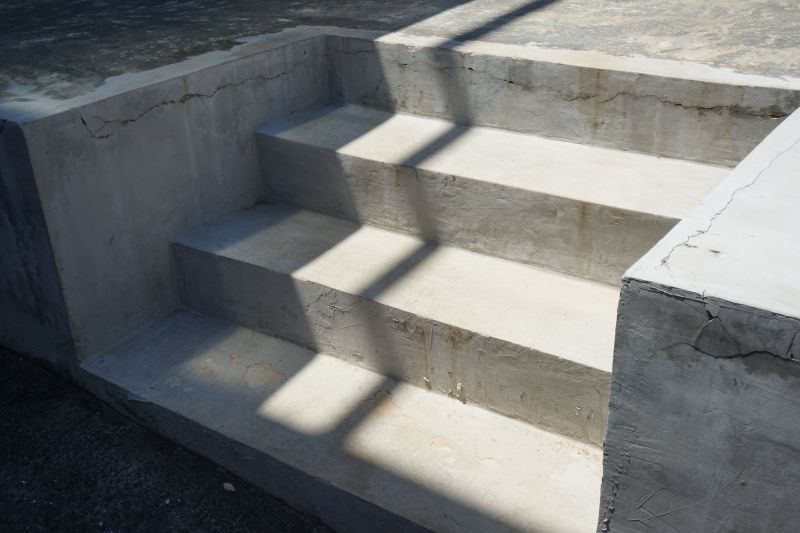Popular Concrete Steps Repair Products For Safe and Secure Walkways
Discover trusted products designed to fix cracks and damages, ensuring safety and stability around your property.
 Concrete steps are an essential part of many outdoor spaces, providing safe and accessible entryways to homes and buildings. Over time, exposure to weather, foot traffic, and settling can lead to cracks, chips, and uneven surfaces, which may compromise safety and aesthetics. Repairing concrete steps involves selecting appropriate products that address specific issues such as cracks, spalling, or structural instability. Proper repair not only enhances appearance but also helps maintain the integrity of the steps, preventing further deterioration.
Concrete steps are an essential part of many outdoor spaces, providing safe and accessible entryways to homes and buildings. Over time, exposure to weather, foot traffic, and settling can lead to cracks, chips, and uneven surfaces, which may compromise safety and aesthetics. Repairing concrete steps involves selecting appropriate products that address specific issues such as cracks, spalling, or structural instability. Proper repair not only enhances appearance but also helps maintain the integrity of the steps, preventing further deterioration.
Types of Products For Concrete Steps Repairs
Concrete Crack Filler
Used to fill and seal cracks in concrete surfaces, preventing water infiltration and further damage.
Concrete Patching Compound
Ideal for repairing chips, holes, and surface imperfections on concrete steps.
Epoxy Injection Kit
Provides structural reinforcement by bonding cracks from the inside, suitable for significant cracks and structural repairs.
Concrete Resurfacer
A thin-layer coating that restores the surface of worn or spalled concrete, creating a smooth, uniform finish.
Polyurethane Foam Sealant
Expands to fill larger gaps and voids, offering flexible sealing for uneven surfaces.
Hydraulic Cement
Specially formulated for rapid setting and sealing of active leaks and cracks in concrete.
Concrete Sealant
Provides a protective barrier against water penetration and weathering on repaired surfaces.
Bonding Adhesive
Ensures strong adhesion between old and new concrete layers during repairs.
Surface Retarder
Used to create textured or decorative finishes on concrete surfaces during repairs or new pours.
Reinforcing Mesh
Metal or fiberglass mesh used to strengthen patches and prevent cracking from spreading.
Popular Choices
Commonly selected for quick and effective crack repairs on concrete steps.
Frequently used for filling larger holes and surface damage on concrete surfaces.
Popular for structural crack repairs requiring strong bonding and durability.
Often chosen to restore worn or spalled concrete surfaces with a smooth finish.
Used for sealing larger gaps and voids with flexibility and expansion properties.
Selected for fast-setting repairs and sealing active leaks in concrete steps.
Applied to protect repaired surfaces from water and weather damage.
Used to ensure strong adhesion between existing and new concrete layers.
Popular for decorative finishes and texturing during repairs.
Commonly incorporated into repairs to add strength and prevent cracking.
When considering repairs, it is important to assess the extent of damage. Minor cracks and surface chips can often be remedied with patching compounds or concrete fillers, while more significant structural issues might require specialized products like epoxy injections or reinforcement materials. Surface preparation is crucial; cleaning the area thoroughly and removing loose debris ensures better adhesion of repair products. Depending on the severity of the damage, different solutions may be appropriate, from simple surface patches to more comprehensive structural repairs.
Choosing the right repair products involves understanding their composition, curing time, and compatibility with existing concrete. Many products are designed for easy application, suitable for DIY projects, while others may require professional expertise. Additionally, selecting products that match the color and texture of the existing concrete can help achieve a seamless appearance. Properly applied repairs can extend the lifespan of concrete steps and improve safety for users, making the investment worthwhile for homeowners and property managers alike.
Key Buying Considerations
- Extent of damage and type of repair needed, such as cracks, chips, or structural issues.
- Compatibility of repair products with existing concrete surface and conditions.
- Ease of application and whether the product is suitable for DIY or professional use.
- Curing time and whether the product allows for quick or extended repair periods.
- Color matching options to blend repairs seamlessly with existing concrete.
- Durability and resistance to weather, water, and freeze-thaw cycles.
- Adhesion strength and bonding capabilities to ensure long-lasting repairs.
- Flexibility of sealants and fillers to accommodate slight movements or settling.
- Inclusion of reinforcement materials like mesh for added strength.
- Safety precautions and proper ventilation during application.
- Cost considerations balanced with the quality and longevity of the repair products.
- Availability of professional support or instructions for complex repairs.
- Environmental factors such as exposure to chemicals or salt, which may influence product choice.
- Compatibility with existing finishes or coatings on the concrete steps.
- Shelf life and storage requirements of repair materials.
This page contains affiliate links. We may earn a commission if you purchase through these links, which helps support our content creation.
